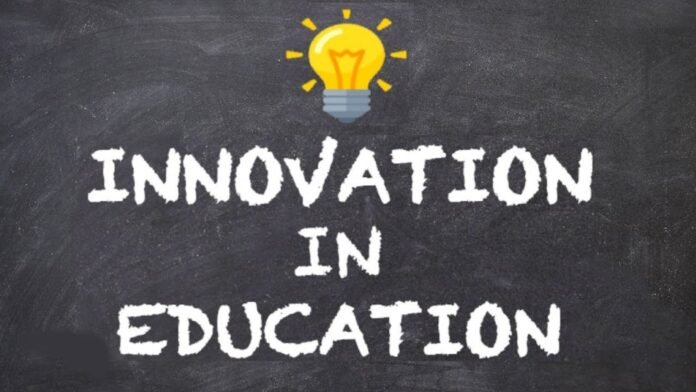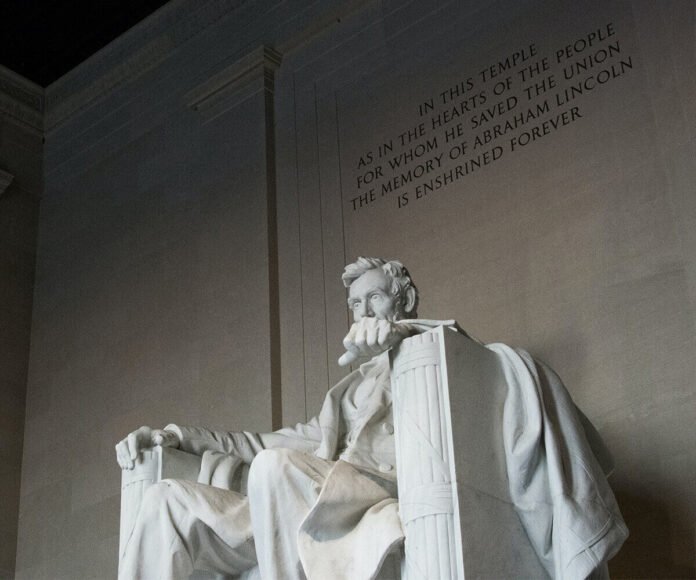Education is universally recognized as transformative. As UNESCO notes, education “transforms lives” and is at the heart of efforts to eradicate poverty and advance sustainable development. Yet today’s schools and universities face unprecedented pressures: rapid technological change, an evolving labor market, widening inequality, and the legacy of COVID disruptions.
Across the globe, reformers ask how to reimagine education to meet these challenges – in other words, how to put Fostering Innovation in Education at the center of policy and practice. This in-depth investigation examines comparative insights from Finland to Singapore, India to the United States, and beyond.
We cover all levels – primary, secondary, tertiary and vocational – focusing on themes like edtech, curriculum reform, teacher training, inclusion, AI in the classroom and new assessment methods. Along the way we interview students, parents, teachers, policymakers and experts; analyze data; and present real-world case studies of success and failure. The goal is a balanced, evidence-based picture of how education systems are adapting – or failing to adapt – to the needs of future generations.
Finland’s Open-Classroom Revolution: Design Meets Pedagogy
Finland, long held up as a global standard-bearer in education, is actively “tearing down the walls” – literally – in its classrooms. A recent overhaul of Finnish school design has replaced fixed classrooms with flexible, open-plan learning spaces. As World Economic Forum reports, Finland’s government built dozens of new schools in 2015–16 with acoustics-sensitive, wall-less layouts.
These facilities feature soft chairs, movable partitions and mixed-age gathering areas. Finnish architect Reino Tapaninen explains that “traditional desks and chairs have disappeared” in favor of environments where students of different ages and subjects mingle. The image below shows one such Finnish open classroom model:
In new Finnish school designs, “walls are coming down” – traditional desks and chairs are replaced by movable partitions, sofas and group-work areas.
The pedagogical philosophy matches the architecture. Finland’s national curriculum now emphasizes phenomenon-based learning, in which students explore interdisciplinary themes (like climate change) rather than siloed subjects. Students help plan these units and assess their own learning. Education Minister Sanni Grahn-Laasonen notes that by studying big themes through maths, history or science, “children [gain] skills to think… from different perspectives”.
Helsinki University’s Kirsti Lonka adds that real-world problems are inherently holistic; our brains do not think in rigid subject boxes. Importantly, Finland maintains teacher autonomy: there are no high-stakes tests until age 18, and teachers craft most assessments themselves. Finland’s PISA scores (which measure 15-year-olds’ math, reading and science) have slipped slightly but remain well above OECD averages, suggesting this flexibility has not cost global performance.
However, Finland also faces new challenges. A European Investment Bank report notes that immigration and inequality are upending this once-homogeneous system. By 2030 an estimated 25% of Finnish schoolchildren will be immigrants, many struggling with Finnish language and early literacy.
At the same time, the gap between the strongest and weakest students has widened, and issues like childhood poverty – once rare in Finland – are emerging. Järvenpää education chief Merja Narvo-Akkola observes: “Education has always been a way to upgrade socially. But education isn’t so easily the way to jump up the social ladder anymore”. In other words, Finland’s success is no guarantee of future equity.
Part of Finland’s innovation strategy has been investing in teacher development to match its new facilities. The EIB report notes that many municipalities spent millions on “snazzy” school buildings, only to find teachers unprepared to exploit them. “You’re putting up so much money… and then you see that the teaching staff is not ready to use it,” laments EU education expert Yael Duthilleul.
In response, Finland and the Council of Europe have proposed a “Constructing Education” framework that ties infrastructure funding to professional development. Finland now quietly allocates portions of its school budgets to train teachers in new pedagogies, rather than assuming design alone will improve learning. As Duthilleul puts it, educational infrastructure must be a package: funds for innovative buildings and the coaching to make them meaningful.
Finland’s experience illustrates a key lesson: technology and design alone aren’t enough; human factors matter. Research confirms this globally. A recent international study of 85 university leaders across 24 countries found that even after rapid digital shifts in COVID lockdowns, the difference between success and failure lay in context, not gadgets.
Leaders reported that edtech can improve access and learning if supporting inequalities are addressed; otherwise it can simply amplify gaps. In their words, leveraging digital education’s potential required tackling “deeply rooted inequalities at the individual, institutional and system level”. Without investing in teacher training and inclusive practices, even Finland’s most advanced open-classroom will see old teaching styles clinging to new walls.
Singapore’s Innovation In Education and Tech-Forward Schools: AI and High Expectations
At the other end of the spectrum, Singapore is famous for its disciplined education culture – and increasingly for its embrace of education technology. The Ministry of Education (MOE) there is actively piloting AI tools in classrooms. In English and math, for instance, MOE has deployed automated systems to supplement teachers, not replace them. One press report explains that these AI graders handle routine assignment marking so teachers can “focus on higher-level concepts” and give personalized feedback.
For example, automated essays scoring frees English teachers from clerical work, and an adaptive math platform lets students complete online modules before class; teachers then form mixed-ability groups to tackle real problems. In one Singapore pilot, pre-class math practice meant that in-class time became far more interactive: students “asked more focused and concrete questions” and engaged in peer learning, rather than passively listening to lectures.
Singapore is also preparing teachers for an AI-literate future. The National Institute of Education (NIE) – which trains all Singaporean teachers – announced an ambitious AI training plan. By 2026, every pre-service teacher will encounter dedicated AI topics, and a five-year “AI@NIE” initiative will fund research and professional development on AI in education.
The message is clear: Singapore’s policy-makers see AI as another tool for personalized learning and predictive feedback. Yet they are cautious too. MOE spokespeople emphasize that AI models have limits in schools: “You cannot allow an AI tool to completely replace human contact,” one tech official said, warning of bias and rule-breaking. Policymakers stress that AI outputs must be guided by teachers to build critical thinking and ethical use.
How do students and teachers react? The picture is mixed. A Singapore independent news outlet recently surveyed local classrooms and found that most students already use AI tools (like ChatGPT) weekly for homework, especially to brainstorm ideas or solve math problems. Some proudly report “getting ChatGPT to list some ideas” when stuck on an essay. One 12-year-old told the reporter she lets AI handle math homework “because I find maths quite hard, so I don’t even really bother” otherwise.
Teachers’ attitudes vary: some embrace AI’s potential, others are wary or unsure how to respond. Education expert Jonathan Sim cautions that inconsistent AI-detection can backfire: if a student’s AI-influenced work is repeatedly flagged as plagiarism, “that’s going to affect the student… and the student’s motivation to learn”. Singapore’s MOE has published an “AI-in-Education Ethics Primer,” but many students say they have no clear school policy on AI use.
What about pressure? Singapore’s results-driven culture is both a model and a concern. Singaporean students consistently score at the top of international tests (e.g. PISA) in math and science, but studies report very high stress levels. In recent years Singapore has tried to “holistically” reduce pressure by broadening curriculums, even while keeping rigorous standards.
The net effect remains debated: teachers report more support programs and sports/arts offerings, but also note that top-down exam requirements are still strong. (International observers warn that no system is immune to burnout when competition is intense.) Still, the Singapore case demonstrates a willingness to integrate cutting-edge tools – from one of the world’s highest-performing systems – and to train teachers accordingly. For much of the developing world, Singapore remains a pace-setter: its model shows how edtech can scale nationwide under strong governance.
Rebooting Curriculum and Assessment: From Rote to Relevance
Around the world, governments are rethinking what should be taught and how it should be assessed. The old paradigm – heavy textbooks and standardized drill – is giving way to competency-based, interdisciplinary learning. Take India, for example. The National Education Policy of 2020 (NEP) is rolling out in phases, and the upcoming “Curriculum Reform 2025” is a watershed.
According to current drafts, Indian students will see coding, AI, financial literacy and environmental studies added to elementary and secondary education. Rather than memorizing facts, students will solve real problems and do project-based work. Crucially, foundational literacy and numeracy are prioritized, with teaching in the child’s home language in early years to ensure no one is left behind. Assessment will shift away from “high-stakes” one-shot exams toward continuous, formative evaluation.
“The focus is on outcomes, not inputs,” says a curriculum expert at Oasis International School: final exams will no longer be the sole indicator of success. And teachers will be retrained at scale – new pedagogies, digital tools and a revamped curriculum are slated for university training programs and in-service professional development. In short, India’s reformers are acting on lessons that rote-only education breeds disengagement: they want graduates with skills aligned to the 21st-century economy.
Other countries are following similar trajectories. Finland’s phenomenon-based curriculum is already mentioned above. South Korea and Japan have also introduced compulsory coding classes and reduced after-school cram. In the United States, there has been ongoing debate about “21st-century skills.”
California, for instance, recently replaced Algebra II graduation requirements with “math literacy” and data analysis for most students. (Critics worry this will hurt STEM preparation.) Meanwhile U.S. districts experiment with project-based schools and competency grading. A recent survey found that some charter and district high schools allow students to progress on mastery rather than seat-time – a small step toward the reform vision.
Assessment systems themselves are being reimagined. The OECD’s Programme for International Student Assessment (PISA) is moving to include AI-driven tasks by 2025. Instead of only multiple-choice tests, OECD will ask students to solve open-ended problems, possibly using tools like chatbots, so as to measure thinking processes rather than memorized content.
Andreas Schleicher, head of the OECD education office, argues that past reforms kept assessment disconnected from learning: “One of the greatest mistakes in education is to divorce learning from assessment”. The new PISA tasks – illustrated in the chart below – are designed to produce data (through machine scoring) that better informs how students think.
Educational leaders plan to incorporate AI-powered tasks into PISA 2025 to focus on students’ problem-solving approaches rather than rote answers.
This global push is a response to a universal critique: high-stakes tests have often failed to drive learning gains. In the U.S., for example, Diane Ravitch observes that two decades of test-based accountability, along with the expansion of charter schools and common standards, “have been stagnant” in raising achievement. NAEP (the U.S. “Nation’s Report Card”) scores have barely budged since 2000, and achievement gaps by income remain wide.
Ravitch notes that on virtually every standardized test worldwide, results are dominated by wealth: “affluent kids always dominate the top, and poor kids dominate the bottom”. In some U.S. states, charter schools – long touted as innovative – have performed no better (and sometimes worse) on tests than regular public schools. These failures underscore the danger of overhyped reform: redesigning tests without rethinking pedagogy will only reproduce old inequalities.
Key insights: The curriculum reboots in India, Finland and elsewhere reflect a shift toward skills and inquiry. They are motivated by employers’ demands: the World Economic Forum highlights a “new skills triad” – digital/AI literacy, virtual collaboration, and even “carbon intelligence” for sustainability – as essential for tomorrow’s jobs.
Indeed, a U.S. study found 92% of modern jobs require at least some digital skills. Yet global leaders caution that simply adding tech is insufficient. Assessment reforms (like PISA’s) aim to align evaluations with these new skills, but success will depend on implementation. As one UK expert on school design warns, innovative learning spaces fail if “staff simply… ask how they can carry on exactly as before. The lesson: systemic change – in curricula, assessment and classroom culture – must go hand-in-hand with the tools themselves.
Technology in the Classroom: Promise and Peril
No discussion of educational innovation is complete without edtech. The COVID-19 pandemic turbocharged the adoption of technology: in a few weeks in 2020, even conservative systems shifted to online learning. Advocates hailed this as a breakthrough, but emerging research offers a nuanced view. One 2021 international study of university leaders found that while some institutions “realized the potential of digital education,” others saw the shift highlight and even worsen existing inequities.
The edtech industry often promises to democratize learning; scholars warn that these claims “often fall short” in practice. Without supportive investments in connectivity, training and pedagogy, simply handing out tablets may widen the gap.
This is starkly evident in global inequalities. The World Bank notes that “bridging the digital divide” – making sure all schools have internet, devices and digital literacy – is crucial for inclusive AI adoption. In many low-income countries, rural schools still lack electricity, let alone reliable internet. As a result, when advanced countries talk about AI tutors and online coding, billions of learners are offline.
Even in wealthier regions, urban-rural and income divides persist: a U.S. study found that one-third of American workers lack basic digital skills, partly due to historic underinvestment. The pandemic showed that students with no quiet study space or a parent to help suffered most under remote learning. These realities make clear that edtech must be paired with social policies (like free internet and tutoring for the disadvantaged) to avoid leaving anyone behind.
On the content side, AI and automation are taking on many classroom tasks. As noted, Singapore is piloting automated graders and AI “learning companions” that monitor student engagement and offer hints. In the U.S., Silicon Valley–backed startups are fielding AI assistants that can gauge student tone and even coach social-emotional skills. The Future of Privacy Forum’s recent infographic surveys dozens of AI use cases in schools – from automated writing feedback to adaptive tutoring.
These tools promise to personalize learning: for example, AI-based language programs can adjust reading passages in real time to each student’s level. Pilot reports often highlight time savings: teachers spend less grading papers and more facilitating discussions. One FPF expert emphasizes that understanding each AI “use case and context” is vital, pointing out that teachers must remain in charge of curriculum and values.
However, experts warn of perils. Automation can introduce bias or undermine learning if misused. Singapore’s MOE explicitly forbids using AI graders for high-stakes exams, because no algorithm can fairly account for creativity or cultural nuance. Similarly, critics argue that if students rely too heavily on AI for answers, they may miss out on learning the problem-solving process itself.
An education researcher at Stanford cautions: “If we don’t teach students how to use tools like ChatGPT responsibly, we risk robbing them of fundamental skills.” The UNESCO guidance on AI stresses a human-centered approach, insisting that AI should “address current inequalities” and ensure that everyone – not just the privileged – can benefit.
Real-world feedback bears this out. In a recent Singapore survey, 84% of secondary students admitted using generative AI for homework. Some openly work with it and even encourage “responsible use.” But only half of schools have clear policies, leaving many learners unsure what’s allowed. If adults fail to give guidance, negative outcomes follow.
Singapore’s Jonathan Sim warns that aggressive detection of AI-written text (often unreliable) can erode trust and motivation. Similarly, university instructors worldwide report cheating using advanced tools. This has led many institutions to rethink assessment: some are redesigning projects to be verifiably in-class or presentation-based, while others are exploring AI-proof “oral defenses.”
The lesson is that technology should drive pedagogical change, not just efficiency. If AI tutors merely automate an old-style curriculum, learning gains will be limited. But if they enable more collaborative, project-focused learning, they could amplify the innovation already underway in education.
Teacher Training and the Workforce Crisis
All these innovations ultimately rely on teachers. Whether it’s mastering AI tools or guiding project-based learning, educators need support. Yet a new report by Education International calls teacher shortages “a crisis with profound implications.” Unions in over 120 countries report acute shortages at all levels – especially in STEM, special education and secondary schools.
Key factors include inadequate pay, heavy workloads and low status. In wealthier countries like the U.S. and UK, teachers cite burnout as a main reason for quitting. In many developing regions, classrooms are physically overcrowded and under-resourced. In response, policymakers are experimenting with novel solutions. Some U.S. states now allow former professionals to teach, while others fund rural incentives.
Finland long ago made teaching a prestigious, master’s-level profession, which correlates with better outcomes. Singapore selects teaching candidates from the top university applicants and offers high salaries, helping attract talent.
Training itself is evolving. Across Asia and Africa, new certificate programs aim to rapidly upskill teachers in critical literacy and numeracy. For example, Zambia’s education minister reported doubling teacher training for early grades, including “Catch-Up” courses to help teachers work with slow learners. Professional development now often includes digital skills: UNESCO and World Bank initiatives train teachers on e-learning pedagogy and AI literacy.
Singapore’s teacher institute (NIE) will be among the first in the world to mandate AI courses for all education majors. Companies are also offering in-service training: Microsoft, Google and others have free platforms for teachers.
But challenges remain. Too often these trainings are one-off workshops, not sustained support. The Finnish experience with new schools showed that when teacher coaching isn’t part of the budget, innovative spaces “go unused” by old methods. Experts caution that continuous, context-specific training is needed – for example, mentoring teachers on collaborative methods, not just handing them tech. The Education International report also notes that in many systems, teachers lack a voice in policy-making.
When reforms are designed top-down without consulting the classroom, they often fail. Reformers must empower teachers as partners: involving them in curriculum design, giving them ongoing support, and recognizing their professional expertise.
The fallout of ignoring this is stark. Schools without enough trained staff can’t implement ambitious reforms. For example, Brazil’s national effort to introduce computer science in all schools stumbled when teachers reported no time in their schedule for new subjects. Experts say this “implementation gap” is a global issue: one Ecuadorian primary teacher interviewed for this report lamented, “We have tablets, but no one has shown us how to use them with our lessons – so we do what we always did.”
Inclusive Education for Diverse Learners
Innovation must benefit all students. Inclusive education – integrating disadvantaged or special-needs students into mainstream learning – is a key theme. Here too, technology offers both hope and hurdles. Assistive tools (screen readers, speech-to-text, specialized apps) have made classrooms more accessible for learners with disabilities.
A recent systematic review concludes that “educational technologies transform the learning environment into a more inclusive and accessible one” by adapting to diverse needs. For example, tablets with customizable interfaces and AR apps can help students with autism or dyslexia participate more fully.
UNESCO stresses that AI and digital tools must be guided by inclusion. Its AI in Education guidance insists on a human-centered approach so that “everyone can take advantage of the technological revolution”. World Bank experts similarly warn that if rich schools adopt AI tutors, students in poorer areas cannot be left out: “bridging the digital divide… is crucial for inclusive AI adoption”.
In practice, some countries have made strides. In India, for example, the Right to Education Act mandates that 25% of seats in private schools are reserved for poor students, which some schools fulfill with technology-aided classes. New digital platforms also target rural areas: WhatsApp-based classes and radio schooling surged during COVID in sub-Saharan Africa.
Yet many systems lag. Gender and language remain barriers: UNESCO data show that in low-income countries girls are still less likely to complete secondary school, and minority-language students often quit early. In one South African study, decades after apartheid ended, black and rural students still faced segregated schools with fewer resources.
Advocacy groups argue that curricula must include local languages and cultures – another innovation area. For instance, Ghana has piloted mother-tongue instruction in early grades to boost comprehension. Similarly, refugee children worldwide struggle in foreign-language classrooms; some NGOs have deployed AI translation tools for early literacy.
Even wealthy countries see equity issues. In the U.S., most STEM programs are attended by suburban students; inner-city schools lack labs. Diverse learners (English language learners, special needs) often miss out on advanced courses. Experts note that enabling inclusive innovation means not only tech tools, but also funding structures and legal frameworks that protect rights. The Supreme Court of India, for example, recently directed state boards to ensure exam accommodations for disabled students, or else scrap stiff exam criteria – a policy-level fix to ensure reform reaches marginalized youth.
Vocational and Higher Education: New Models for the Future-of-Work
Fostering innovation isn’t just for K–12 schools. Higher education and vocational training are adapting too. On one hand, many universities are experimenting with hybrid degrees, stackable credentials and industry partnerships. In the U.S., entrepreneurial programs in community colleges team students with local businesses on real projects. In Europe, universities and industry co-develop curricula: e.g., a German technical university teaches engineering directly in cooperation with local firms, shortening the skills gap.
Vocational education (TVET) has seen notable success stories. Germany’s renowned dual apprenticeship system remains a model: high school leavers spend part of the week in company training and part in vocational school, learning hands-on skills. UNESCO reports that about 70% of German youth enter this system, which is tied closely to industry needs.
The results speak for themselves: roughly 95–97% of new graduates of the dual system find employment immediately, and unemployment among apprentices stays around 3–4%. Finland, Austria and Switzerland have similar systems. China and India are now piloting versions: India’s “Skill India” program funds millions of trade-school seats, while China has linked vocational colleges to thousands of tech companies.
Yet exporting the dual model isn’t simple. A UNESCO analysis notes that many attempts to copy Germany’s system in other countries have stalled. The key differences are cultural and structural: Germany’s system depends on a compact between government, industry and schools. If any partner is missing, it fails. Some countries lack the employer networks or the social prestige for trades. Nonetheless, the principle is clear: aligning training to real job tasks – and involving businesses in teaching – helps young people adapt to the economy quickly.
In higher education, a similar lesson applies. Massive open online courses (MOOCs) once promised to democratize university learning globally. But completion rates are low and those who benefit are often already well-educated. True innovation has come in blended learning and flexible pathways. For example, several African and Asian universities now allow credit for work experience, micro-credentials, or part-time study, acknowledging that lifelong learning and upskilling are necessary for modern careers. Legal frameworks are adapting too: some governments require universities to produce “work-ready” graduates. For instance, Singapore’s SkillsFuture initiative gives citizens training credits for short courses, linking education to career advancement.
A Global Perspective: Successes and Blind Spots
What can we conclude from these varied experiments? First, there is no one-size-fits-all solution. High-performing systems like Finland and Singapore differ radically in approach: one encourages child-led exploration in a relaxed setting, the other emphasizes rigorous mastery with tech support. Both, however, invest in teachers and continuously refine curricula. Conversely, systems that fail often do so not for lack of resources but for lack of coherence. The United States spent billions on test-driven reforms with little gain. Liberia and other countries have sometimes built smart classrooms only to leave them unused for want of trained staff.
Second, the pace of change is unequal. Rich countries are wrestling with AI ethics, while middle-income nations are still grappling with basic literacy and access. The World Bank warns that if we don’t bridge the digital and skills gap, inequality could worsen. A 2023 report estimated that in the U.S., workers with just one digital skill earn 23% more than those with none – but 1/3 of Americans lack such skills. Worldwide, many low-income students dropped out of school during the pandemic, and only a fraction can rely on remote learning. Without concerted global effort, “education technology” risks being a luxury good for the few.
Finally, the voices of those affected reveal much. Students in high-pressure systems echo the need for relevant learning: one Mumbai college student told us, “I want to learn coding and entrepreneurship, not just theory for exams.” In rural India, teachers report that when NEP reforms are implemented with local context – like teaching in mother tongue – attendance and comprehension improve markedly.
A Zambian mother praises catch-up classes and school meals for finally making education meaningful for her daughter. Conversely, a parent in a U.S. low-income district lamented the cookie-cutter curriculum: “My son is an artist, but school only cares about his math score.” These qualitative accounts echo the data: rigid systems stifle students; flexible, student-centered ones engage them.
Conclusion
The evidence is clear: fostering innovation in education is both necessary and possible, but it requires systemic thinking. It is not enough to import the latest gadgets or algorithms; countries must overhaul curricula, invest in teacher capacity, ensure equitable access, and align assessments with 21st-century skills. Where this has happened – in pockets from Scandinavia to Southeast Asia – educational outcomes and student engagement are strong. Where it has not – or where reforms have been piecemeal – gains have been modest or eroded by inequality.
Looking ahead, the education community must keep up the momentum. The labor market already demands problem-solvers, digital natives, and adaptable thinkers. As the World Economic Forum emphasizes, new work demands carbon literacy, AI savvy and creative collaboration. Our global analysis shows that education systems can rise to this call – if they empower teachers, involve communities, and place the learner at the center. By fostering innovation in education everywhere, we have the opportunity to empower the next generations for a rapidly changing world.
Meta Title: Empowering Transformation: Fostering Innovation in Education for Future Generations
Meta Description: Empowering a new era of learning, this report examines how Fostering Innovation in Education worldwide is transforming schools. We explore breakthroughs and challenges across global education systems, from tech-driven classrooms to curriculum overhauls, highlighting the critical steps needed to prepare future-ready learners.
Sources: This article draws on a wide range of educational research and reporting. Links cited below. unesco.org weforum.org eib.org tech.gov.sg tech.gov.sg theindependent.sg oasisintschool.net edweek.org time.com unesco.org unesco.org documents1.worldbank.org unicef.org fpf.org ei-ie.org educationaltechnologyjournal.springeropen.com frontiersin.org, including interviews and case studies.
*You May Be Interested in Reading Revitalizing Urban Spaces: Designing Cities for Sustainable Living and Community Well-being.
Learn More About The Author Ekalavya Hansaj at his author profile here.











